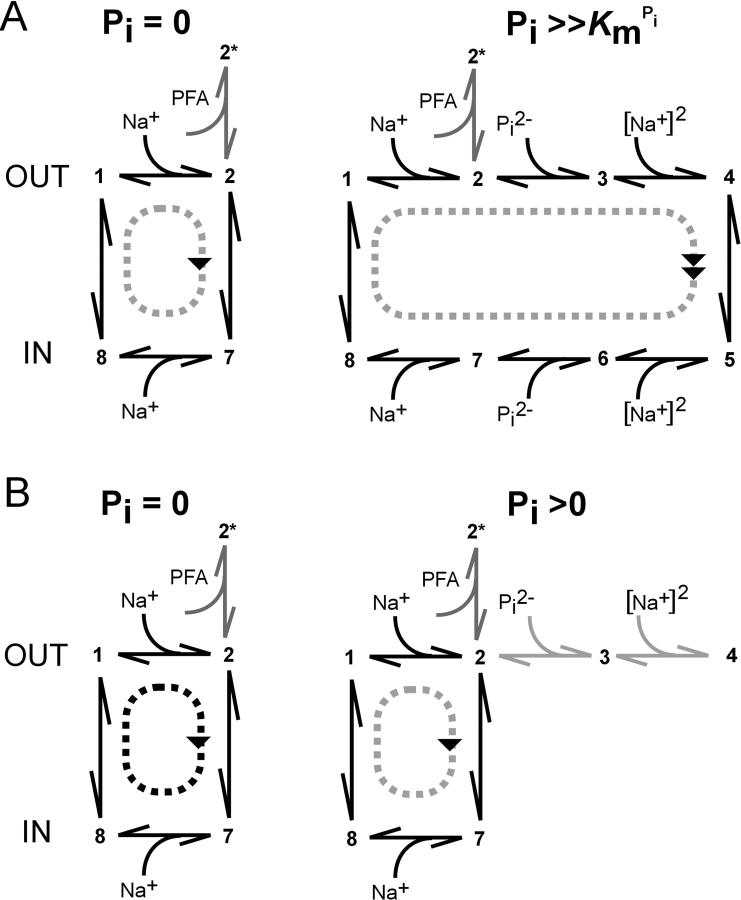Figure 7.
Interpreting the effect of MTS reagents on the transport properties of NaPi-IIa, based on an alternating access kinetic scheme. (A) Before Cys modification, transport activity assumes either leak mode (left) or cotransport mode (right), depending on the availability and concentration of external Pi. It is assumed that the internal concentrations of Na+ and Pi are such that the cycle proceeds in the direction indicated. (B) After Cys-modification, leak mode still operates (left) in the absence of external Pi. In the case of MTSES/MTSEA, a higher turnover rate is also predicted that could result from modification of rates associated with the transition 2–7. For external Pi > 0, the probability of occupancy of state 3 increases, thereby reducing the probability of transition 2–7 occurring, so that the leak activity is progressively suppressed in a dose dependent manner as the concentrations of external Pi and/or Na+ increase (see text). At saturating Pi, and Na+, the probability of occupying state 4 is high, but the translocation transition (4–5) is prevented by the modified Cys residue.

